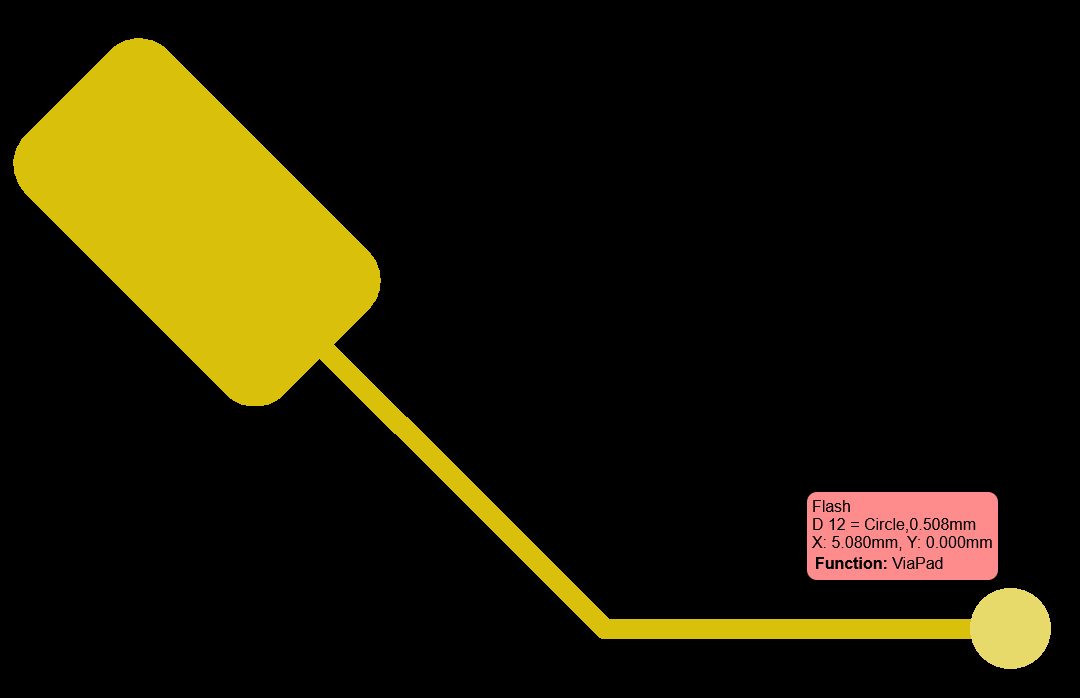Readme
Purpose
A Python library for writing Gerber files.
The API is much simpler than the Gerber format specification - 8 pages vs 200.
No need to read the 200 page Gerber format specification.
All common pad shapes are built-in.
User-defined pads shapes are easily created.
100% compliance with revision 2023.08 of the Gerber Layer Format Specification.
Conservative, robust output files.
Risky constructs failing in some buggy applications are avoided.
Standardized meta information for fabrication, such as which pads are vias.
Input parameters are checked for compliance with the Gerber spec.
Stateless input (the gerber_writer takes care of the Gerber states).
Example:
from gerber_writer import DataLayer, Circle, RoundedRectangle
trace_width = 0.127
via_pad = Circle(0.508, 'ViaPad')
IC17_toe = RoundedRectangle(1.257, 2.286, 0.254, 'SMDPad,CuDef')
toe_point = (0, 2.54)
via_point = (5.08, 0)
top = DataLayer('Copper,L1,Top,Signal')
top.add_pad(IC17_toe, toe_point, angle=45)
top.add_trace_line(toe_point, (2.54, 0), trace_width, 'Conductor')
top.add_trace_line((2.54, 0), via_point, trace_width, 'Conductor')
top.add_pad(via_pad, via_point)
with open('gerbers\gerber_writer_example_small.gbr', 'w') as outfile:
top.dump_gerber(outfile)

Installation
Windows:
$ py -m pip install gerber_writer
Linux:
$ python3 -m pip install gerber_writer
Requirements
Python 3.9 or higher
Standard library only.
OS independent.
License
Apache 2.0 license